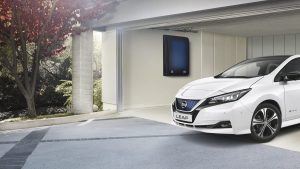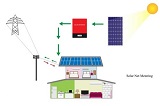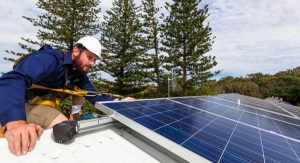Both rooftop and ground-mounted solar arrays are designed and engineered to withstand  a myriad of environmental conditions. High wind, hail and even lightning strikes are no problem for a well engineered system. One persistent issue that can plague owners of solar, however, is pests, like birds and rodents. As with chimneys, rain gutters, eaves, overhangs and other architectural features of a house or commercial building, solar arrays can make attractive shelters for pigeons, starlings, squirrels, roof rats and other uninvited guests.
a myriad of environmental conditions. High wind, hail and even lightning strikes are no problem for a well engineered system. One persistent issue that can plague owners of solar, however, is pests, like birds and rodents. As with chimneys, rain gutters, eaves, overhangs and other architectural features of a house or commercial building, solar arrays can make attractive shelters for pigeons, starlings, squirrels, roof rats and other uninvited guests.
We’ve recently received a request from one of the solar system owners in Vaughan, ON:
“I already have solar panels installed – it is a 10 kW system. I am in need of a company to come to my house and remove one (possibly two) rows of installed panels (including track) on the WEST side of the house only. A roofing company will be replacing the roof vents with metal vents, due to a squirrel problem.”
What kind of problem, you might ask? Well…rodents in particular love to chew on wires:
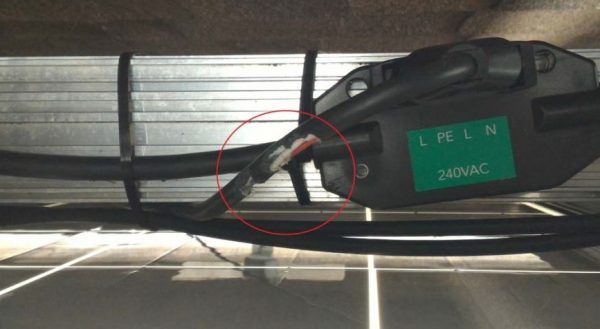 Example of rodent damage to PV wiring. Courtesy of Ray Yousef, ESA
Example of rodent damage to PV wiring. Courtesy of Ray Yousef, ESA
This is true of all wiring, not just solar, but because the cables on solar panels carry high voltage DC, are easily accessible to animals and are not in armored cable, they are especially susceptible. To address this issue, section 64-210 (5) of the Ontario Electrical Safety Code “requires mechanical protection against rodents for PV source circuit conductors on or above a building, where the dc arc-fault protection (when required) is not located at the module.”
This means a couple of things. First, wherever possible, wire running across the roof or down from the roof needs to be encased in conduit. This is just common practice for electricians, as no exposed cable can run unprotected. However, the flexible, unprotected cable that connects the panels in a string together needs to be protected as well.
First and most importantly is making sure that all cables are secured to the panels or rack with wire ties located within 300 mm of every box or fitting and at intervals of not more than 1 m throughout the run. This keeps the cable from hanging down below the rack and touching the roof. This is required for several reasons, not just rodents, but it definitely helps.
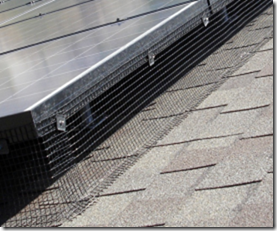
* Expanded metal
* Solid metal; or
* Screening
When installing wire screening, the installer must ensure adequate airflow to avoid potential overheating for PV wires underneath the modules. This also means that the screens need to be kept clear of leaves or other debris.
Mounting the screening or other material requires a bit of finesse, as drilling into the panels themselves is not permitted. Other ways of attaching the screen to the rack or panels using special clips or other hardware or adhesives. There are several products on the market that are made especially to protect your solar array against rodents. Spiffy Clips and SolaTrim are two products made especially to protect rooftop solar from animal damage.
When making a major investment in a solar project, the last thing you want to do is have the entire project disabled by a pesky squirrel chewing on your cables. The investment in animal protection is well worth the cost, and now, according to Ontario electrical code, it is a requirement.



